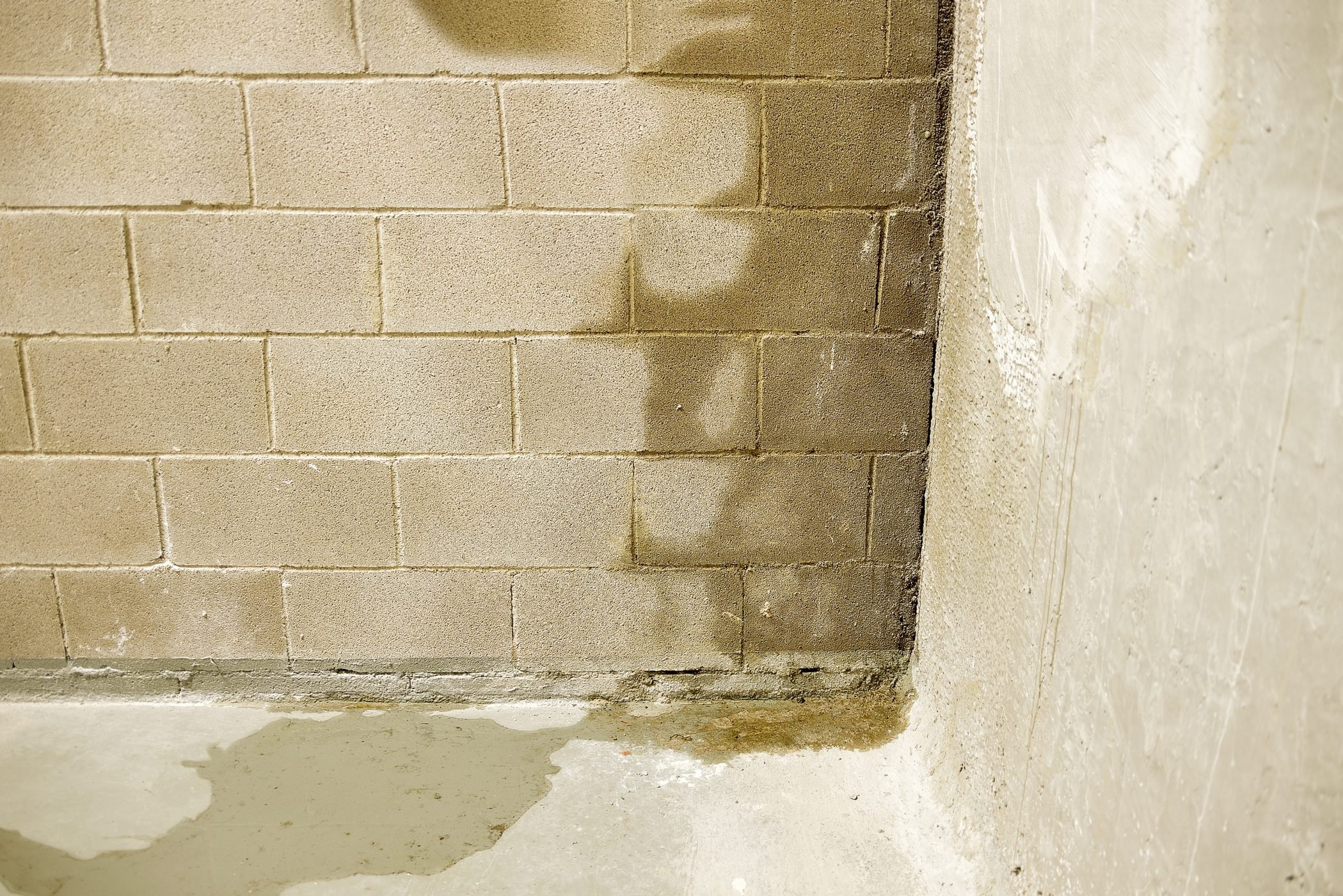Nobody likes a wet basement. You can do some waterproofing yourself, but if you've got a severe water problem, your best bet is to call in a pro.

Guide To Waterproofing Basement Walls

Because they’re below grade and close to the water table, basements tend to be damp. That can be a major issue for anyone hoping to finish their basement, because drywall, flooring and interior paint all perform poorly in damp conditions.
It’s a problem even for those who leave their basement unfinished. Dampness promotes the growth of unhealthy mold, and standing water can render parts of the basement unusable.
If you’ve got a basement moisture issue, you’re probably wondering about your best options. To answer some common questions, we spoke with Dallas Nevill, owner of Rainbow Restoration, a Neighborly company.
He confirmed you’ve got problems any time you see water in the basement, but wasn’t bullish about DIYing a full-on waterproofing project. It’s a multistep procedure that may involve outdoor work to improve drainage around the foundation and/or installation of a sump pump. A pro can determine a better basement waterproofing strategy than most homeowners.
However, that doesn’t mean you shouldn’t consider doing some of the work yourself. If the problem isn’t severe, you may get by with something as simple as a waterproof coating on the walls. That’s basically a painting job, and most homeowners can do that.
On This Page
Signs You Need To Waterproof Basement Walls
It’s easy to figure out you have a problem if there’s water on the floor, but other indications are more subtle. Moisture can come from the inside as condensation, or outside as seepage or leaking. Here’s how to waterproof a basement floor.
Here are some things to look for:
- Soft or discolored drywall on finished basement walls.
- Excessive condensation on pipes and ducts.
- Musty odors.
- Cracks and efflorescence on concrete walls.
- Noticeably damp and humid air.
- Water tracks on wall around basement windows or rotted wood in window casings.
It’s important to distinguish between moisture coming from outside and condensation originating from inside the basement itself. Here’s an easy way to do this:
Tape a piece of aluminum foil to the wall, leave it for a few days, then check it. If the side facing the room is wet, that’s an indication of condensation. If the side facing the wall is wet, you’ve got a seepage problem.
When Is Waterproofing Basement Walls DIYable?
When condensation causes a damp basement, homeowners can often remedy the situation themselves. It may simply be a lack of ventilation, and running a fan or dehumidifier may be the solution.
If the laundry room is in the basement, the dryer could be generating humidity. You could possibly isolate it with new walls. Homeowners can also insulate water pipes and HVAC ducts where condensation forms.
Other measures include applying a waterproofing coating or reinforcing the seal around basement windows with spray foam insulation. Outdoor drainage issues can be corrected by adding downspout extensions to divert roof runoff away from the foundation.
Water actively seeping through the walls or collecting on the floor is more serious and is often better left to pros. It may call for a new foundation drainage system, installing drain tiles on the basement floor, or perhaps a sump pit and sump pump.
Water accumulation in window wells may call for better-fitting covers or even window renovation. If you need professional waterproofing, nevill says, expect to pay between $3.50 and $6.50 per square foot, with the average total cost between $1,900 and $6,000. Here are the basement waterproofing costs you can expect.
Prepare for Waterproofing Basement Walls
To get ready for waterproofing, Nevill recommends moving large obstructions out of the basement so that work can proceed smoothly.
It’s also important to remove standing water and dry things out as much as possible, particularly if you’re waterproofing the walls. Waterproofing coating products only adhere to dry surfaces.
DIY Methods for Waterproofing Basement Walls
There are basically two methods, depending on whether the moisture is coming from inside or outside.
Insulate the walls
Humid air in the basement can cause moisture to collect on the walls, which are colder than the rest of the room. In this case, adding wall insulation is usually the best approach.
You can frame new walls and fill them with batt insulation, which will cost, on average, between $1,000 to $1,600 for 300 square feet of wall space. If you add drywall, the cost is likely to run from $2,500 to $6,000.
If you don’t want to go to that much trouble and expense, you could adhere rigid foam insulation to the walls with construction adhesive. That will cost between $300 and $500 for 300 square feet.
Apply a waterproofing coating
If the walls are damp with seepage from outside but they aren’t actively leaking, an elastomeric waterproofing coating can seal them. You can apply most products yourself by brush, roller or spray.
Before you do, patch cracks with hydraulic cement and remove efflorescence. Scrape it off with a wire brush or dissolve it with a solution like muriatic acid. You also need to dry the walls, which may require a heater, fan or both.
A product like Drylock costs about $50 per gallon and covers 75 to 100 square feet. You usually need two or three coats for effective sealing, running the cost to cover 300 square feet to about $500.
How Long Does Basement Wall Waterproofing Last?
On average, at least 10 years, but it depends on the amount of hydrostatic pressure groundwater exerts on the wall from outside.
If your coating fails prematurely, you’ll probably need to install a drain, regrade around the foundation or, in severe cases, dig out the foundation and install a waterproof membrane. Hopefully the situation will never come to that. But if it does, it’s best to let a pro handle it.




















